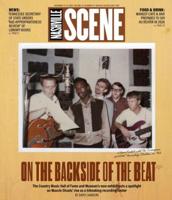When I turned 30, I fell in love for the first time, and with it came instant panic. Is this all there is to it? Is this how simply it happens? Am I “done” now? Is everything laid out from here?
Having grown up with parents who hit all the “right” milestones at all the “right” times but still could not avoid emotional complications, I have always fought against a life of predictability. So too, it seems, has The Worst Person in the World’s Julie, played with wit by the infinitely endearing Renate Reinsve. Soon after she turns 30 and falls suddenly in love, she is gripped with fear.
Like so many millennials, Julie is struck by how a relationship — with writer and illustrator Aksel, played by a devastating Anders Danielsen Lie, who was also impressive in last year’s Bergman Island — seems to prescribe a particular future. A future with children, a home, domestic squabbles, even more intimacy. He’s not perfect, but he’s older, he’s wise, he’s kind, and he adores her. They communicate easily, and they can’t keep their hands off each other — every bit of their coupling is simple. The love between them is itself unquestionable, but the circumstances invite new questions: Is this really the life Julie wants?
That is the key query director and co-writer Joachim Trier’s profoundly gentle character study explores. Split into 12 little chapters, Worst Person — which is nominated for Best International Feature Film and Best Original Screenplay Oscars — tracks Julie’s love life from her 20s, when she hops between beds and careers, to her 30s, when she meets and eventually leaves Aksel for Eivind (Herbert Nordrum), a charming man she bumps into when she crashes a wedding.
It’s moments like these that spin the film into a refreshing take on the classic romantic comedy. Because Julie and Eivind are spoken for but cannot resist their instant mutual attraction, they hover on the edge of infidelity, testing the boundary by smelling each other, by urinating side by side, by shotgunning a joint. The supreme sexual tension builds masterfully. They are bound to succumb to their attraction, though it’s unclear if it ever elevates to something more.
Later, Julie flips a switch, the world freezes, and she and Eivind spend the day together, filling her with an incandescent joy. Watching a wide-eyed Reinsve sprint through an on-pause city with a massive grin inspired by new love feels so remarkably authentic and relatable that you almost want to turn away.
That is the easy beauty of The Worst Person in the World. There is no denying that Julie is messy and chaotic, but she’s in the figuring-yourself-out stage. She doesn’t know who she wants to spend the rest of her life with, if anyone at all. She doesn’t know if she wants a better relationship with her father, or if she wants to be a doctor or a photographer or a writer. But the film passes zero judgment, and by extension neither does the viewer. Life is a series of choices, and the best we can do is make the right ones for us at the time.
Naturally then, as life goes, the film gradually descends from energetic rom-com to something much more serious as tragedy strikes, leaving Julie to question the steps she’s taken. Did she make the right calls? There are regrets and there is guilt, but those feelings don’t vanquish the thrills and highs in between, however momentary they may be. It all makes for a vulnerable portrait, one that fits well into director Joachim Trier’s so-called Oslo Trilogy, a loose collection of mood pieces that also includes 2006’s Reprise and 2011’s Oslo, August 31st.
The ultimate takeaway, it seems, is that it’s OK to say no and to choose a different path, whether or not it leads anywhere at all. Particular people and places are not necessarily meant to be a part of our lives forever, though we may take pieces of them with us. The journey — and all the meet-cutes along the way — is the point.





